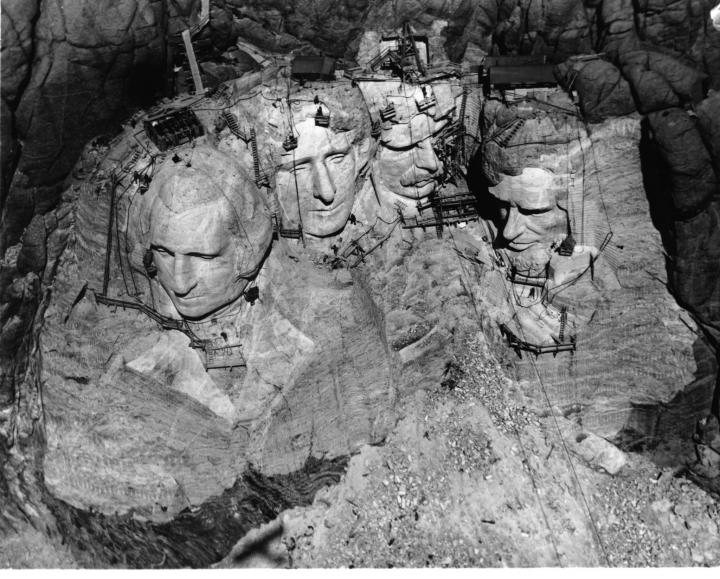Join the Almanac in a coast-to-coast exploration of America’s most beloved national parks and historic sites. This time, we visit Mount Rushmore, located in South Dakota’s Black Hills.
Mount Rushmore
We arrived at Mount Rushmore National Memorial just around dusk in order to avoid the weekend crowds. After saying hello to a few wild donkeys who crossed our path, we headed up Iron Mountain Road, which would eventually deliver us to the little town of Keystone and Mount Rushmore, which lies just outside it.
South Dakota State Historian Doane Robinson was the first to envision a giant stone carving in the Black Hills. His original 1923 proposal included likenesses of Red Cloud (an Oglala Sioux leader), Meriwether Lewis, William Clark, and Buffalo Bill Cody.

Mount Rushmore as it neared completion, circa 1941. Credit: Photo courtesy of the National Park Service, photographer Rise Studios.
The father-son team of sculptors, Gutzon and Lincoln Borglum, instead chose four presidents to honor ideas and events they deemed essential to the history of the United States. From left to right, they are:
- George Washington, the first president of the United States and the quintessential “founding father.”
- Thomas Jefferson, our third president, who represents the early expansion of a new nation, most notably because of his Louisiana Purchase.
- Theodore Roosevelt, whose legacy of conservation and preservation gave us the National Park Service.
- Abraham Lincoln, the Great Emancipator, who ultimately preserved the Union after the Civil War.
We were glad we chose to visit in the evening, when the summer heat had diminished and the crowd had dissipated. The sight of those stone faces, backlit by a dazzling sunset, is one I will not soon forget.
Travel Tip: Route 16A, Iron Mountain Road, had us on the edge of our seats. In 17 hair-raising miles, there are 314 curves, 14 switchbacks, and three “pigtail bridges,” where the road makes a 360-degree circle, spiraling above (or below) itself. When you emerge from the last of its three tunnels, you have a breathtaking view of the National Memorial, which is visited by nearly 3 million visitors annually.
Learn More
Do you know the connection between Abraham Lincoln and almanacs? Find out here!
Visit the Mount Rushmore website for more information on visiting this national treasure! Then check out the rest of our national park and historic site articles to see where to go next.










